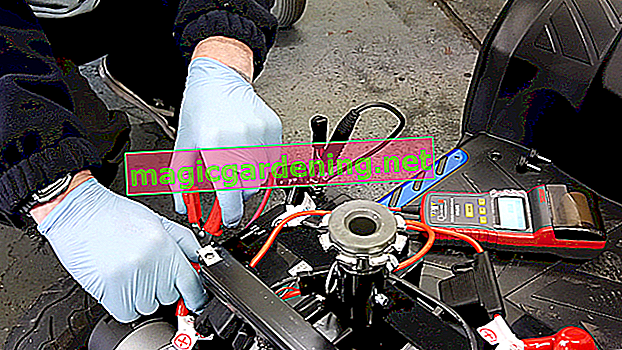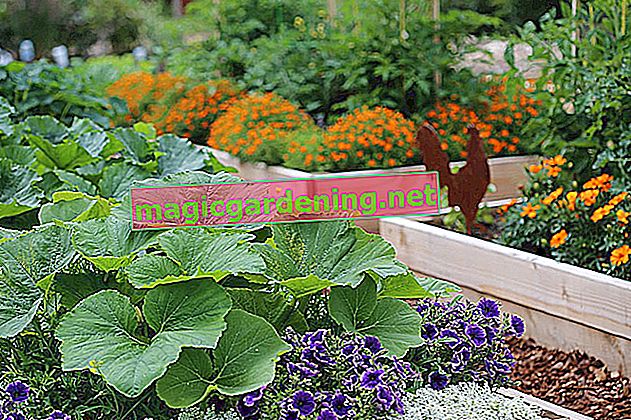
Transplant time: In spring or autumn
Hostas should only be transplanted during their resting phase. If you transplant it in midsummer, you risk the plant being damaged and perhaps even perishing. Spring between February and March is ideal for transplanting. Then the hosta is about to sprout and can take a transplanting action well.
also read
- What should be considered when hibernating hostas?
- Planting hostas: which aspects play a role?
- Hostas: species and varieties at a glance
Alternatively, you can move your hosta in autumn. But then your host will need frost protection over the winter (does not have enough time to take root beforehand), which will protect it from significant minus temperatures. For example, sticks that are placed over the root area are suitable.
Dig up Funkie harmlessly
First, the host is generously dug up with a spade. You do not have to prick very deeply because it is a shallow root. Place the spade a good distance apart so that it doesn't damage too many roots. Basically, hostas are robust and survive this procedure.
Divide before transplanting
If you've dug up your hostess, this is your chance to share it. This not only serves to multiply, but also to rejuvenate the perennial. The rhizome can be pulled apart with your hands on sandy soils. In loamy soils, it is better to split the rhizome in the middle with a spade.
Now to the right location!
When choosing the location, pay attention to the following points:
- Choose well-drained, humus-rich, nutrient-rich soil
- shady to partially shaded location
- Locations under trees are well suited
- leave enough space for neighboring plants (at least 50 cm)
- Fill the planting hole with some compost
- After planting, water well and mulch
Tips
If hostas are divided during transplanting, they will grow better and faster afterwards.
 Giant Hosta blue 'Halcyon' 7.84 EUR Buy at baldur
Giant Hosta blue 'Halcyon' 7.84 EUR Buy at baldur  Hosta-Mix 'Exclusive' 8.82 EUR Buy at baldur
Hosta-Mix 'Exclusive' 8.82 EUR Buy at baldur








